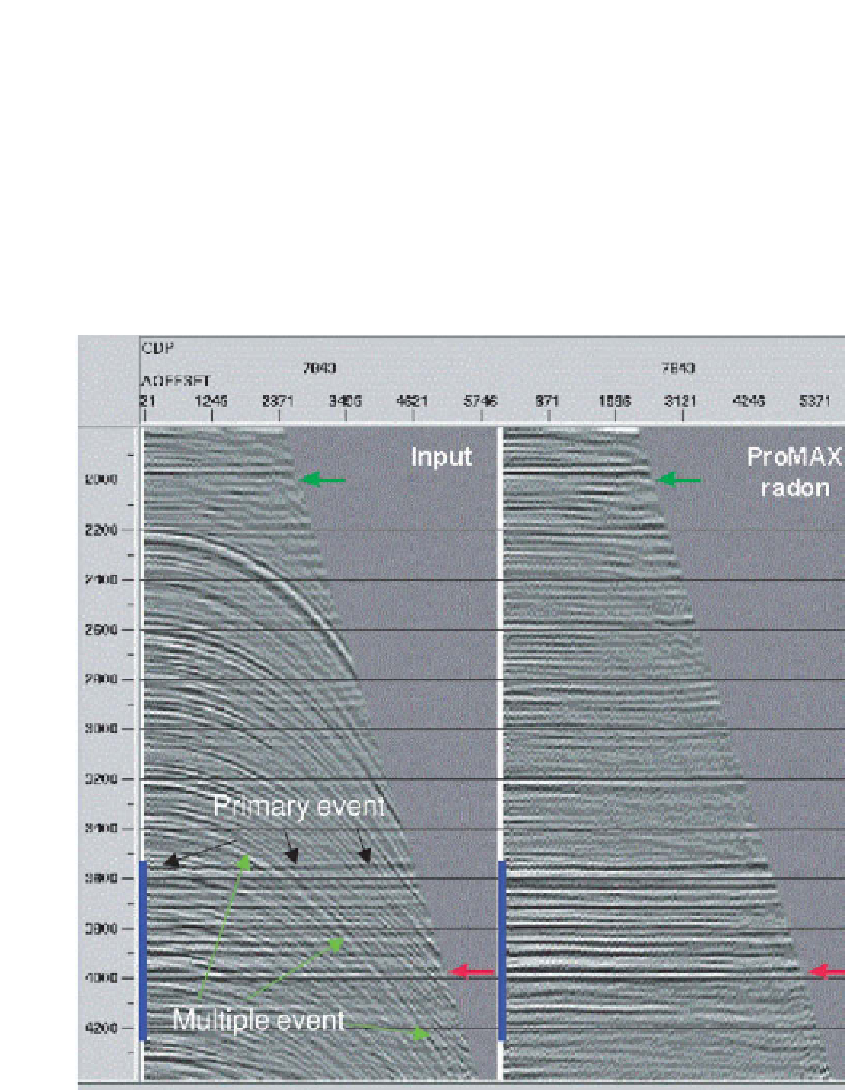Geoscience Reference
In-Depth Information
the multiple. In the former class are the most commonly used techniques, Radon and
FK demultiple. In both cases the data are normal moveout (NMO) corrected to ap-
proximately flatten either the multiple or primary events. (The concept of NMO is
explained in
Appendix 2
and the equations for it are given in
section 3.3.3
.) The
data are then transformed to Radon or FK space and the unwanted events are re-
moved by rejecting (or passing and subtracting) the multiple events. The methods work
because multiples spend longer travelling in the (generally slower) near-surface and
hence have a moveout velocity that is slower than the primary events arriving at the
same time
(fig. 2.27)
. Multiple elimination in areas of strong water bottom reflection
Fig. 2.27
Gather showing primary and multiple events, illustrating moveout differences between
the two. In this example the primary NMO velocity has been used to flatten the primary events. The
multiples, in this case from a deep seabed, are dipping from top left to bottom right. This example
shows the removal of the multiple by the Radon transform technique, where events with moveout
on the farthest offset greater than 100 ms and less than 1500 ms were removed.

